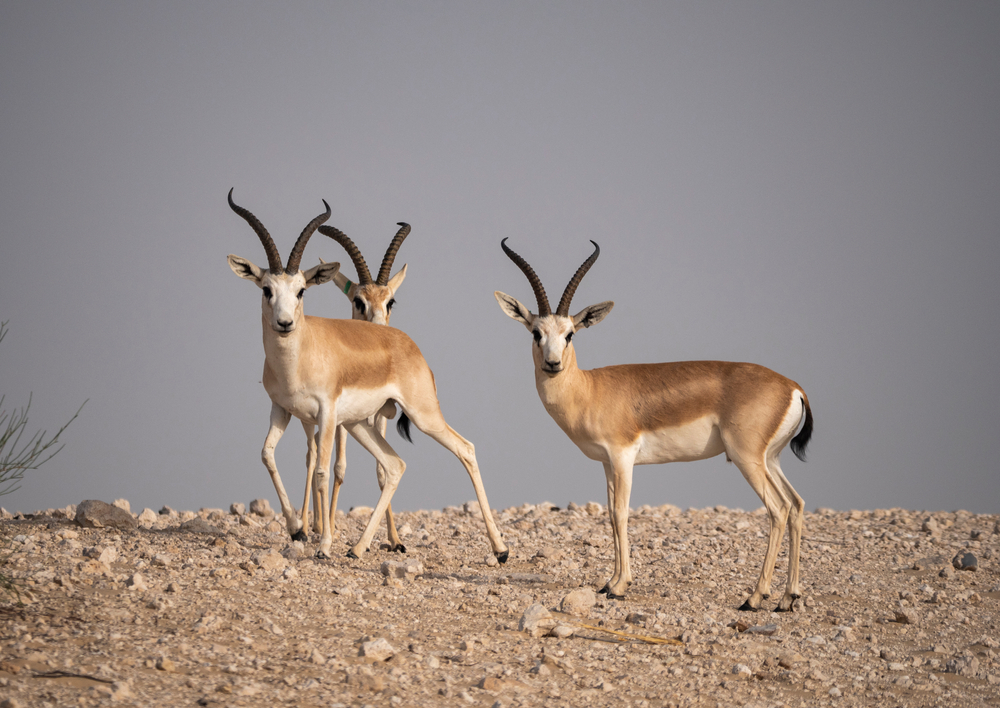Gazelles are herbivores who primarily eat plants. Their diet includes grasses, leaves, and bushes.
When water is abundantly available, they often eat more grasses. When access to water is limited, they tend to eat more flowers, leaves, and buds because they have higher water content.
Gazelles tend to be small animals, so to reach plant material, they often have to stand on their hind legs.
Their long necks help them to reach plant material that can seem out of reach.
Table of Contents
When are gazelles most likely to eat?
As grazing animals, they will continually eat the plant material they come across. However, they prefer to feed during the early morning hours and in the evening so that they are not out in the hours with the highest temperatures.
Gazelles have an additional stomach which allows them to store food when access to plant material is limited.
Given this anatomical benefit, they often consume more food during a single period than is needed.
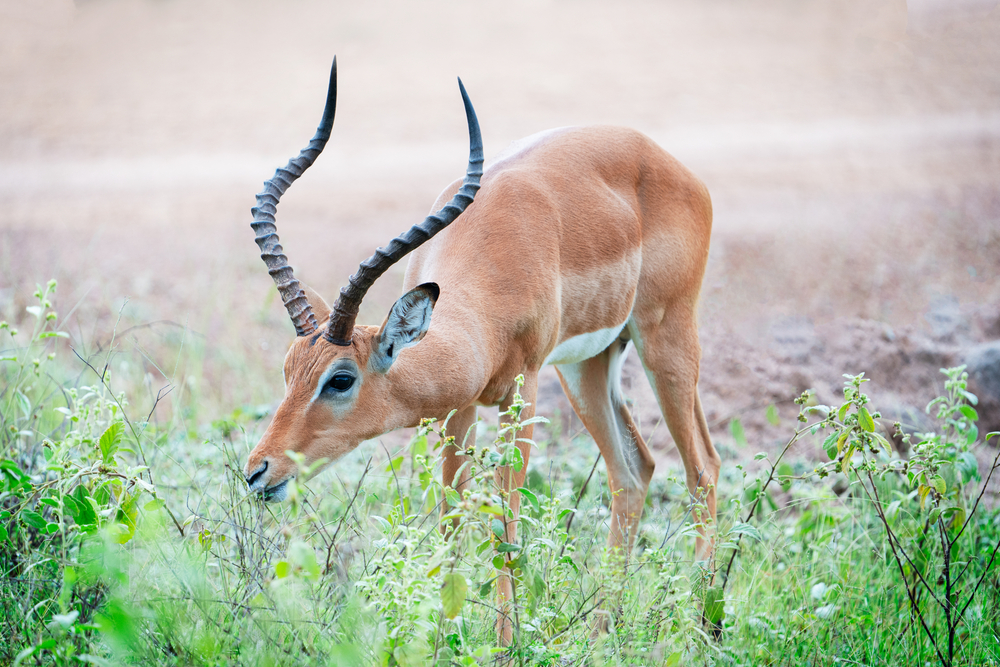
This means that they are able to feed less frequently if needed.
Another benefit of gazelles’ morning and evening feeding patterns is that this is a time when plants have the most moisture.
This gives them the fluids that they need while also providing the food they need.
In order to digest a dry plant diet, gazelles have very large salivary glands which help to process the fluids needed.
It also follows that their urine is extremely concentrated as their bodies remove a lot of moisture from their fecal material before expelling it.
How do gazelles get enough water?
Gazelles receive most of the liquid they need from the plants they eat. This is particularly important for young animals who need more fluids than adults.
In some cases, it is possible for an animal to remain hydrated without ever drinking water during its lifetime.
A unique feature of gazelles is that when they are in harsh environments, they have the ability to reduce the size of their hearts and livers.
This allows the animal to breathe more deeply. The smaller organs reduce the amount of water lost through respiration.
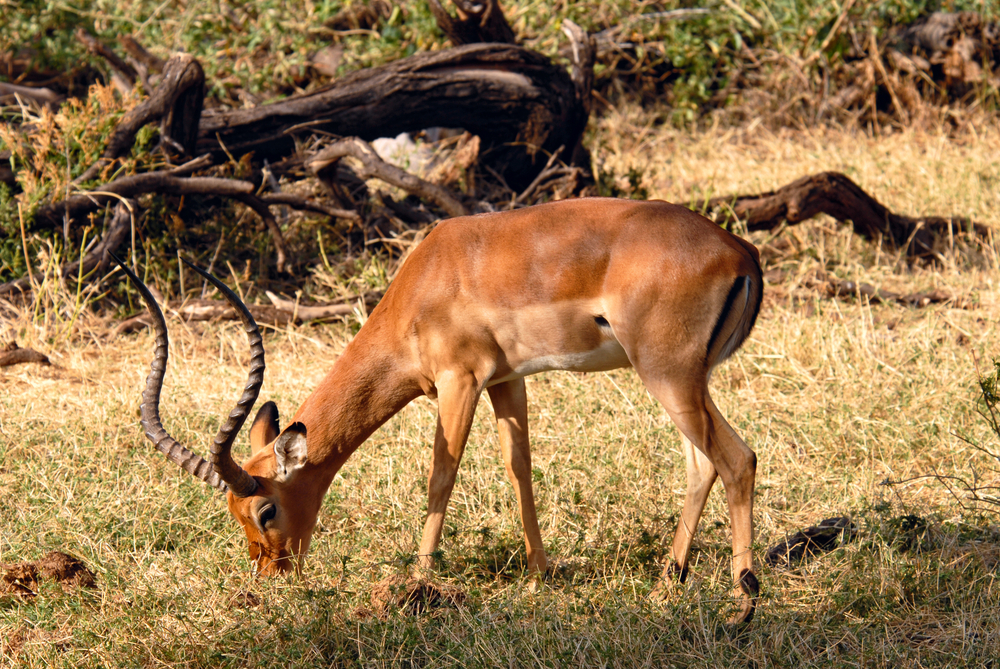
In addition to being able to limit their breathing, and consume moisture through plant material and other tactics, they will also pant rapidly to cool their bodies even in the harshest climates.
As most of these animals are found in Africa and other difficult environments, these abilities to make the most of the food and fluid they consume are essential to their survival.
Due to where they naturally live, their bodies have the essential functions to make the most of moisture.
As they reach adulthood, they begin learning to rely less on moisture. As mentioned above, some animals may never actually drink water during their lifetime.
Gazelles and giraffes
There are many similarities in the feeding behaviors of gazelles and giraffes. For instance, both types of animals work together to gather food.
Both gazelles and giraffes will also feed together in groups in the same location without bothering other animals in their group.
What are gazelles?
Taxonomically, gazelles belong to the genuses Gazella, Nanger, and Eudorcas. While there are sixteen types of gazelles, they all have comparable sizes and body shapes.
With long legs, they resemble a small deer. Each type of gazelle is around two to three and a half feet tall from the shoulder.
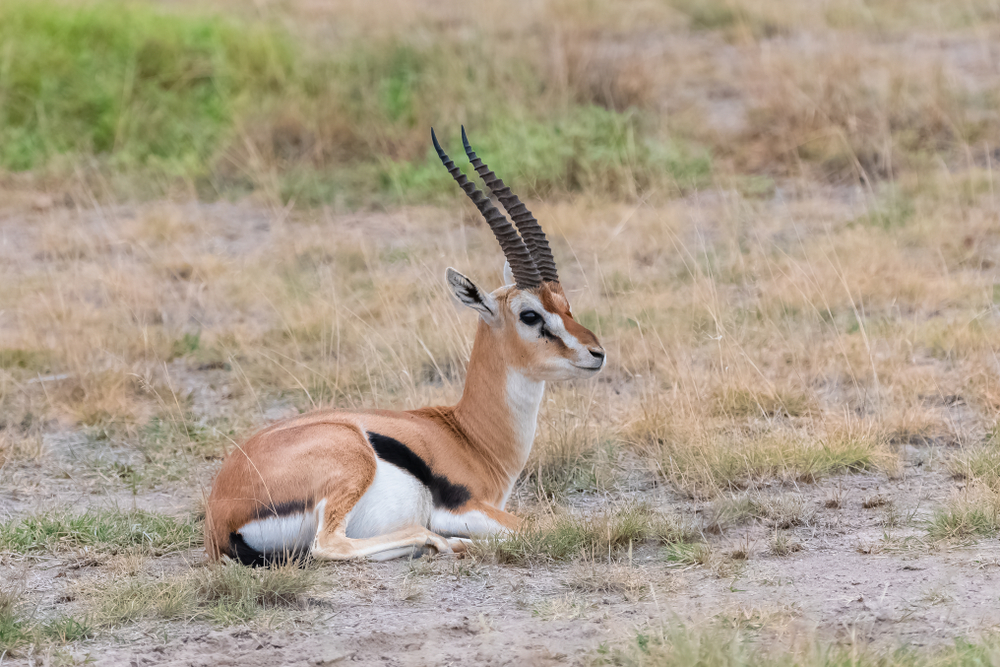
Thomson’s gazelle is the most commonly known.
Most have similar coloration, as well, with white underbellies and light tan or brown fur. This coloration allows them to be camouflaged while feeding or resting.
Another noticeable feature is that they grow horns. The horns typically grow upwards and curve slightly to the back.
About their horns
As mentioned, there are several varieties of gazelles. With some gazelle types, only the males grow horns.
In others, both males and females have them. This is used as both a protective factor and also a social element within their group.
Commonly, though, the horns are used to spar with each other. In many cases, the males will lock horns to establish the right to breed with a particular female.
When this happens, it is not to harm one another but rather to establish dominance within the group.
Other features of gazelles: speed, heightened senses, and pronking
These three traits are essential to helping gazelles survive.
As a small, lean animal, speed and agility are essential. Gazelles lack the ability to fight a predator, but their speed allows them to get away fast.
While they can hit speeds of 60 mph and higher – at times faster than a cheetah – their slim, graceful bodies are not built for endurance.
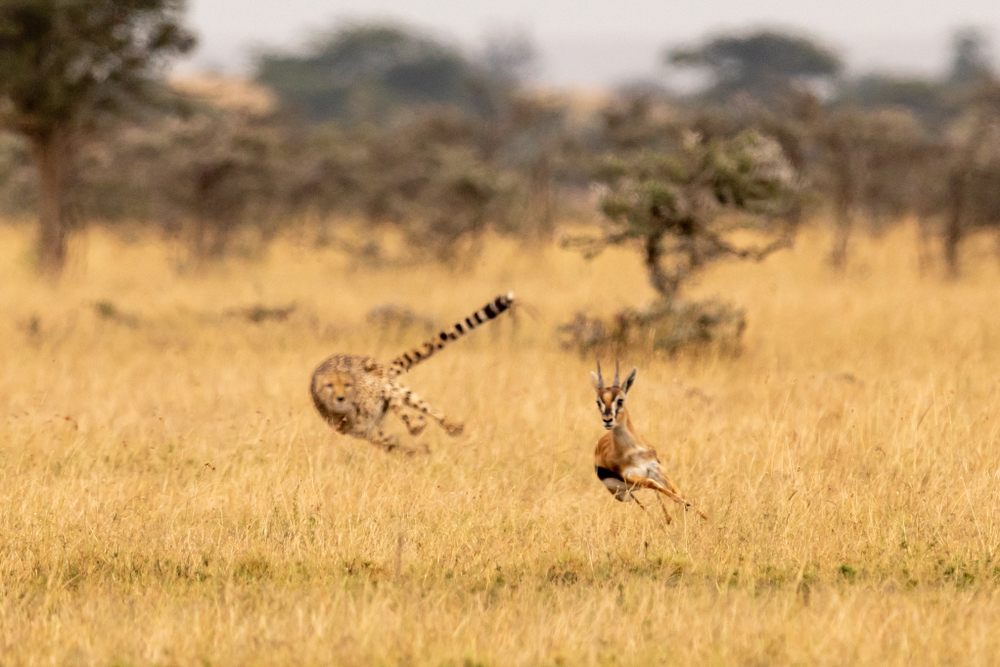
Gazelles also have heightened senses. Sensitive hearing, smell, and visual acuity give them an edge.
When a threat appears, they inform others in the herd by stomping their feet and flipping their tails.
This signals the others that danger is near, and they need to seek a safe area.
Pronking or “stotting” is believed to be a defense behavior. The gazelle will jump up with all four feet into the air.
Researchers have studied this unusual behavior. The speculation is that is meant to deter any predators with a display of agility that makes them hard to capture.
Gazelle behavior
To reduce the risk of predation, gazelles live in herds for better protection. The herd is led by a male adult that keeps males from other herds away.
This form of protection keeps the females and any juveniles safe.
While gazelles from different herds don’t usually interact with each other, it does sometimes happen.
However, for the most part, gazelles strive to maintain peace within the group. This protects them from their primary predators including hyenas, leopards, jackals, wild dogs, and crocodiles.
Maintaining the herd through reproduction
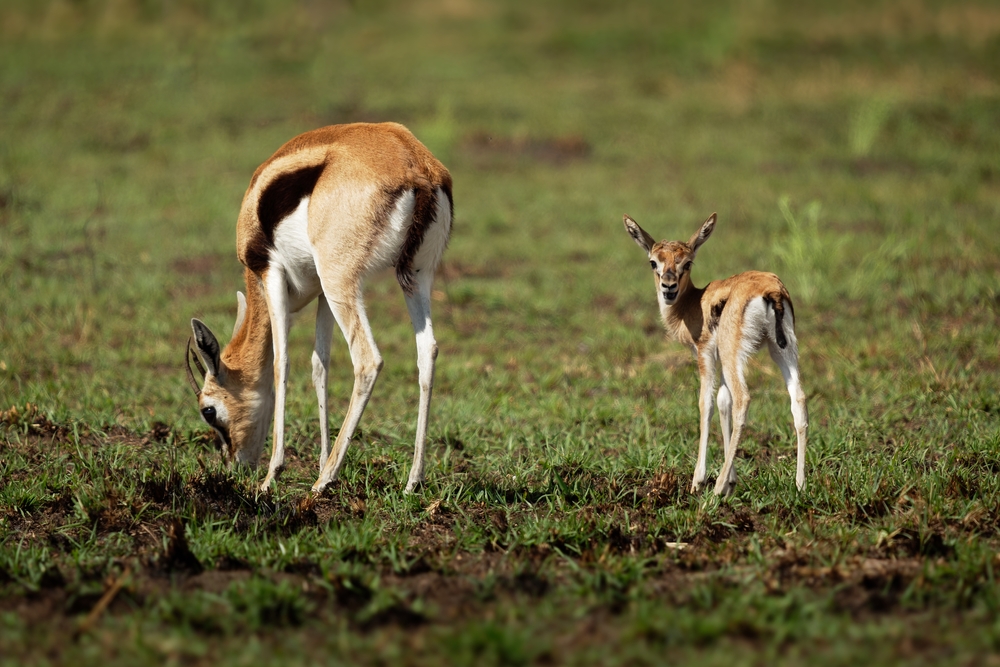
In their natural habitat, gazelles typically have a 12-year lifespan. In zoos or other captive situations, this increases.
The only way to maintain the herd is through reproduction.
Each adult female in the herd will have one to two offspring each year. The pregnancy term is about six months long.
After this, the female will hide the offspring in the tall grass until it is able to join the herd.
It usually requires that the newborn stay hidden and nurse with the female for a period of days or weeks.
The young need to build strength to be able to leave the grasses and join the rest of the herd.
Due to the high risk of predation, care is given to protect the young until they are ready to join the group.
Gazelles’ habitats
The different species of gazelles live in several habitats around the world. The commonalities between all species of gazelles are that they prefer arid regions or places with low annual rainfall.
These habitats can range from grasslands, deserts, sand dunes, savannahs, and plateaus. Though vegetation in these areas may be more limited, there is enough to support the small gazelle.
Also, in arid regions, the gazelle’s ability to draw moisture from their food helps even during the dry season.
Where to find gazelles
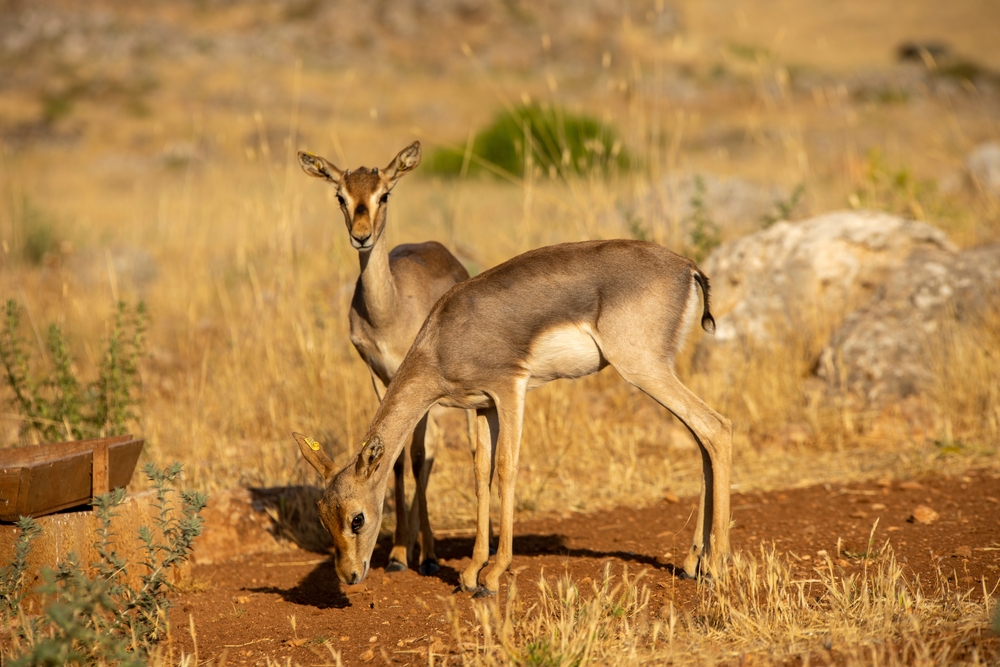
Varieties of gazelle species can be found throughout Africa, the Middle East, and India. Each species type has its own preferred area and range.
Depending on the type, they may cover large ranges while their counterparts inhabit only a small region.
Those groups with smaller ranges are more likely to be impacted by human activity, placing them in greater danger.
Humans and gazelles in close interaction
There are several dangers to having gazelles and humans in close communities. There are several ways that humans can have a negative impact on groups of gazelles.
Special steps need to be taken to prevent further damage to herds.
Gazelles that live in groups that travel broadly are less at risk. However, close proximity to humans has resulted in declining populations of gazelles.
In fact, it has put many species close to extinction.
One species that is listed as critically endangered is the dama gazelle. This is due to habitat destruction, hunting, and competition with livestock for available foodstuffs.
While threats come in several forms, the most prominent is the destruction of the gazelle’s natural habitat.
While some efforts have been made, no gazelle has ever been domesticated.
Gazelles in zoos and other captive situations
Gazelles are not animals that will be domesticated, so zoos attempt to provide them with an environment similar to where they are naturally found.
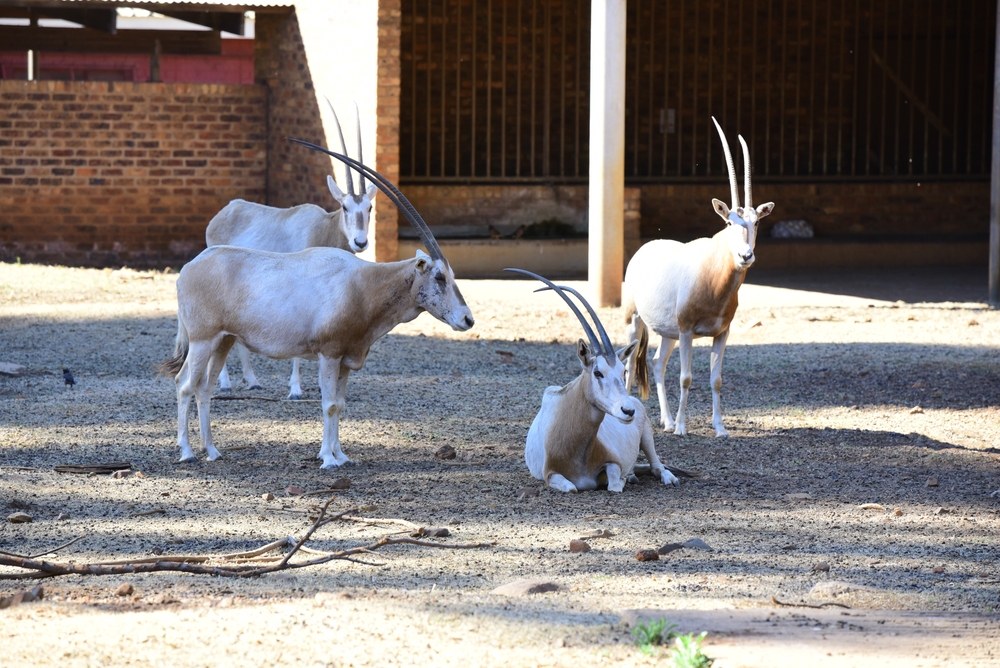
This means keeping the herd structure together. They also provide them with a large savannah enclosure that is filled with grasses and shrubbery.
Some zoos also include other hoofed animals in the same enclosure environment. It is also possible to see several types of gazelles in the same enclosure.
This is a drive to provide them with a more natural environment.
To supplement their diet, zoos provide fresh grasses, alfalfa hay, and pelleted food designed for herbivores.
In general, each animal consumes about 2.5 pounds of herbivore pellets each day. This is further supplemented with leaf eater biscuits.
Zoo veterinarians also give vitamins and minerals to bolster the animals’ health.
Reproduction in a zoo environment
Research and observation in the zoo environment have led to the largest amount of information known about gazelle reproduction.
Studies have greatly broadened our understanding of different species of gazelles.
Males become sexually mature at one year of age. Females reach sexual maturity at one and a half years.
Births occur throughout the year in a human care environment.
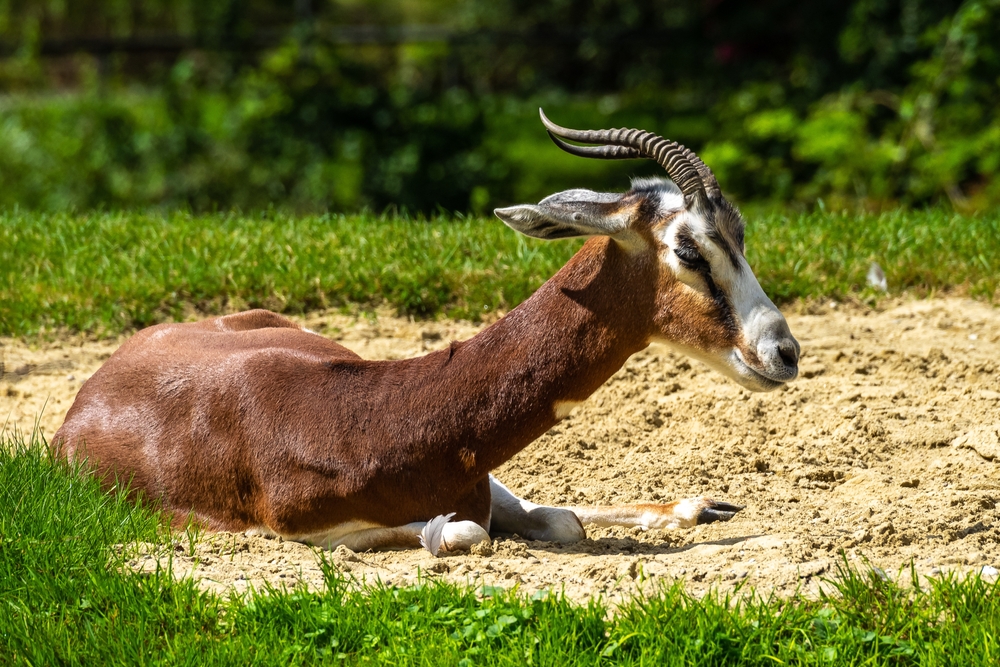
Reproduction studies at the Smithsonian National Zoo
Through the Smithsonian National Zoo & Conservation Biology Institute, reproductive scientists conduct fecal hormone studies with the dama gazelle.
This work has allowed them to pinpoint puberty onset. Further, they study the females’ estrus cycle, gestation period, and duration.
The work has also allowed them to study the sexual patterns of both males and females over a period of time.
Further, they are developing cryopreservation techniques while studying gazelle semen. This work opens the door to future inseminations and the best possible time for that procedure.
Gazelle lifespan in a zoo environment
In the wild, the life span of the dama gazelle is not truly known. When cared for by humans in a zoo environment, males can live for 15 years.
Females can live for 19 years. This is due to their improved nutrition and reduced risk of predation.
Gazelles are lithe, slim animals that feed on vegetation with their herd group. While there are some differences when they are cared for by humans in a zoo environment versus in the wild, researchers have learned a great deal about their feeding, behavior, and sexual habits.
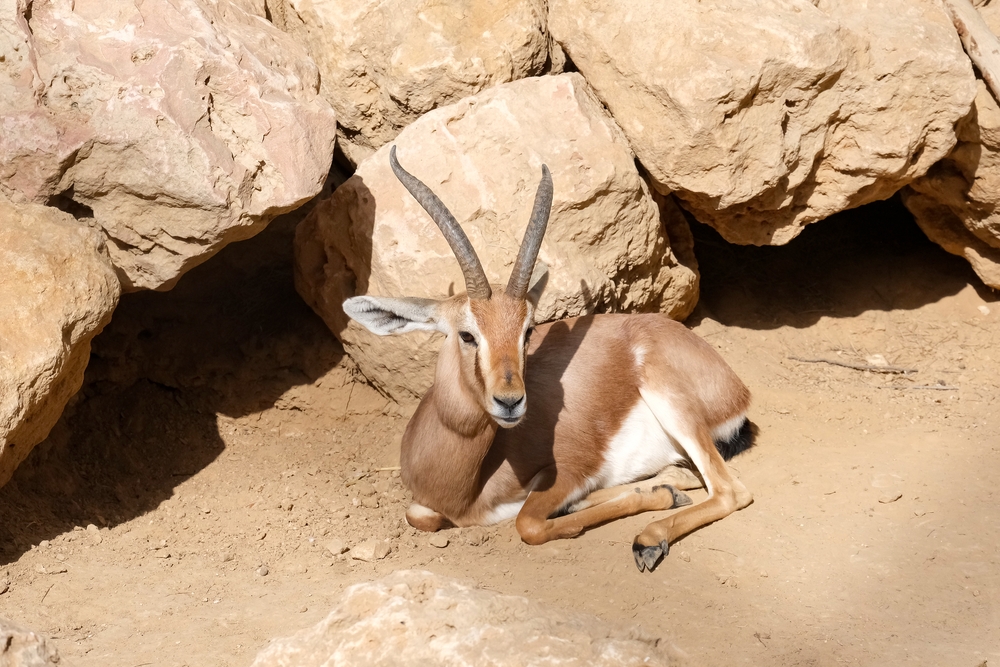
Conservation and educational efforts continue around the world. These efforts seek to curb hunting and the encroachment of humans in the gazelles’ environment.
This work seeks to preserve gazelles and the foods that they naturally eat in the wild.

